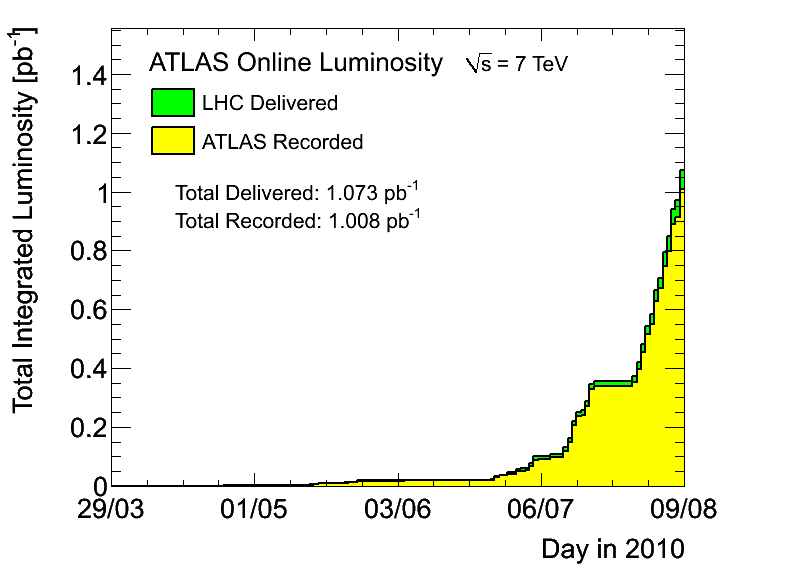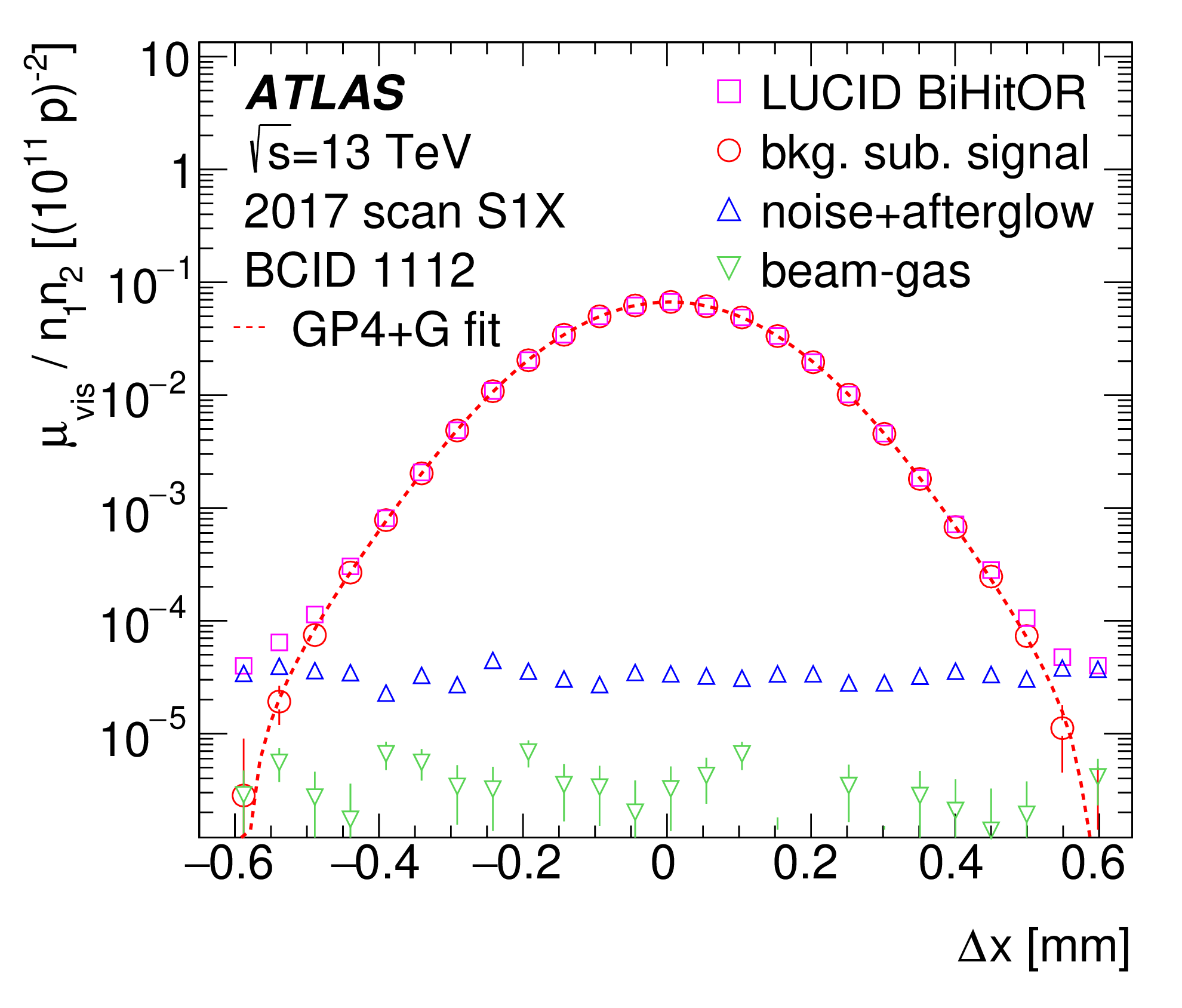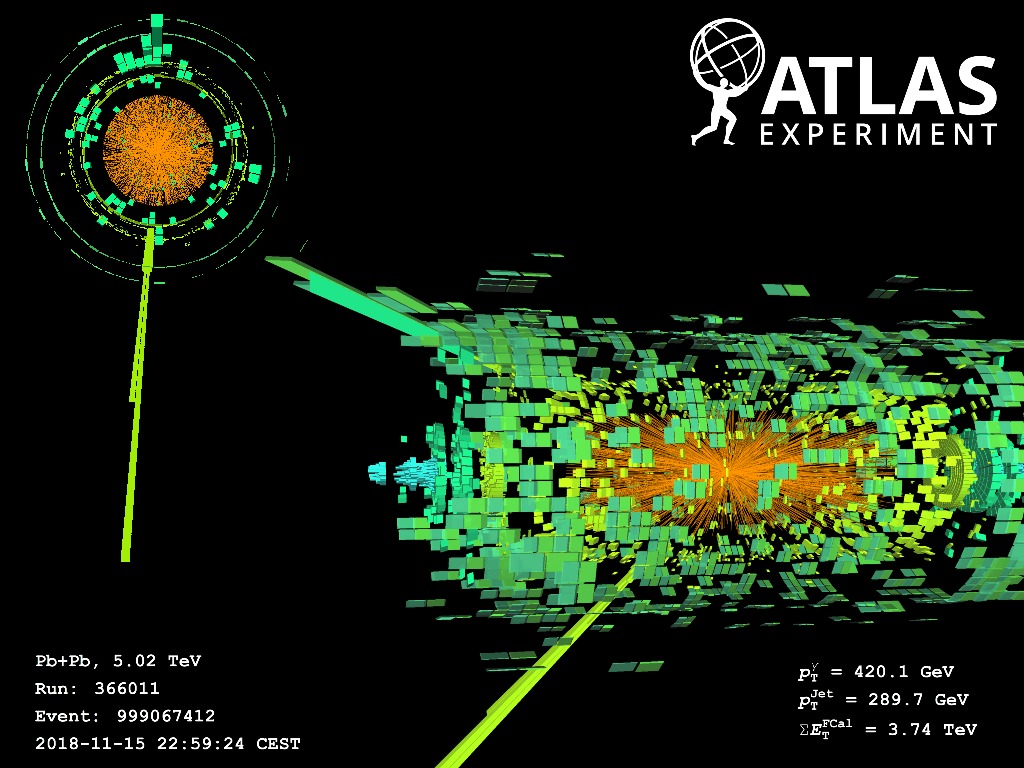The inverse picobarn threshold has been crossed in ATLAS!
10 August 2010 | By
Another milestone has been passed in the long run of ATLAS toward new physics. On Monday August 9, 2010 ATLAS has recorded the first inverse picobarn (pb-1) of 7 TeV collisions. The trend is good and we recently reached the 0.1 pb-1 per day of integrated luminosity (meaning that we can now collect in ~10 days the amount of data we have collected over the last 4 months).

This pb-1 threshold has a psychological impact, as we now change units to evaluate our physics reach, and we’ll stay with these units for many months (the 1 fb-1 (or 1000 pb-1) threshold is for end-2011 in the current plans).
What is the meaning of “1 inverse picobarn” of data? It means that we have in our data 1 event if the cross-section of the process that gives birth to this event is of 1 picobarn (pb) and we are fully efficient to select it. As the ordinary collisions at 7 TeV have a cross-section of ~1011 pb, it means that we start to “see” events as rare as 1 in 100 billions.
So, just to make one example, we have order of 104 W-->lepton+neutrino and 103 Z0-->lepton+lepton in the data and few tens of top decays should also show-up (some candidates already exist, see previous post). The old particles "zoo" (including the heavier partners) all show-up in this first pb-1 and will be studied in detail also using the other pb-1‘s soon to come.
More we go into the many-pb-1 domain, more details of the known physics we can study and more windows to the new physics will open-up.
A challenging and exciting time in front of us!




